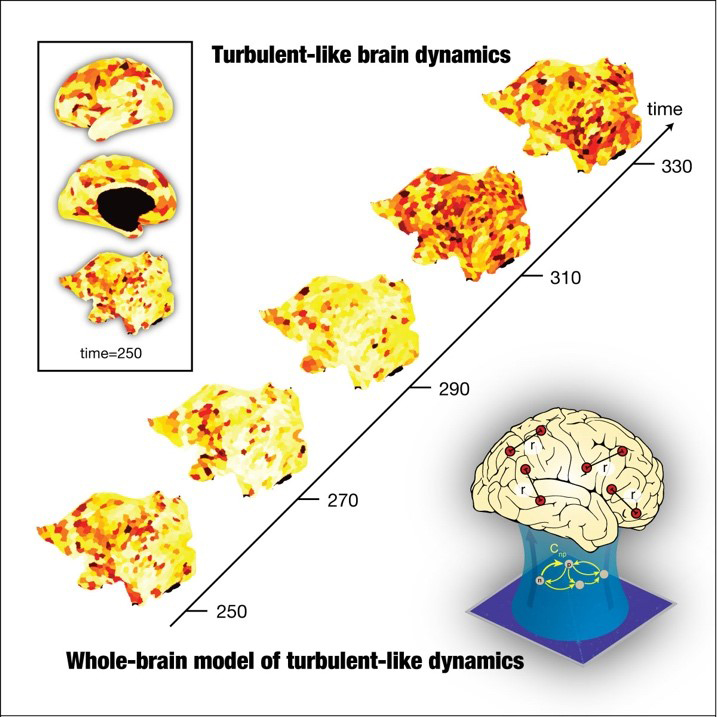Most people know turbulence mainly from the experience of flying, yet turbulence is a fundamental feature of nature and found everything from rivers to galaxies.
Giants of modern physics and mathematics like Andrey Kolmogorov, Yosihiki Kuramoto and Werner Heisenberg have succeeded in establishing some of the organising principles of turbulence. While most famous for his work in quantum physics, Heisenberg was equally obsessed with turbulence and discovered some of the fundamental statistical rules in 1946.
Yet, it is only with the new paper ”Turbulent-like dynamics in the human brain” published in the leading open-access journal Cell Reports on 8 December 2020 that researchers have turned their attention to turbulence in the human brain. Resulting from an international collaboration between Center for Brain and Cognition at University Pompeu Fabra, Barcelona (Spain) and Department of Psychiatry, University of Oxford and Center for Music in the Brain, University of Aarhus, Profs Gustavo Deco and Morten L Kringelbach have discovered turbulent-like dynamics in human brain data from functional magnetic resonance imaging (fMRI) recordings from over 1000 participants.
Previous research has shown that turbulence is the optimal way of cascading energy across spacetime over many scales, which is not just a visually pleasing phenomenon but as a fundamental organising principle of physical systems. It has also been shown to have significant relevant practical applications from improving chemical plants to airplanes and windmills. Our new results reveal a novel way of analysing and modelling whole-brain dynamics that suggests a turbulent-like dynamic intrinsic backbone facilitating large scale network communication. This new insight could revolutionise our understanding of brain function.
Prof Kringelbach adds: “This new finding provides a novel yet solid framework that could be used for new biomarkers for neuropsychiatric disease. In the coming years, this framework could potentially lead to novel interventions that could improve the mental health of many people, especially after this turbulent pandemic”.
